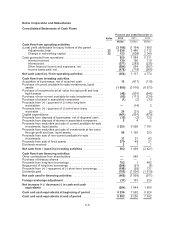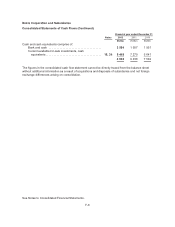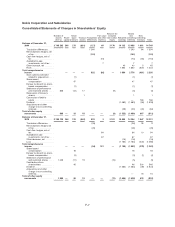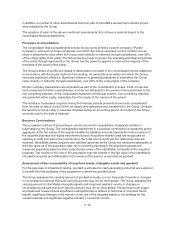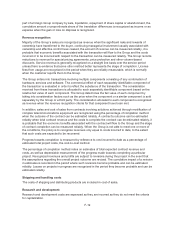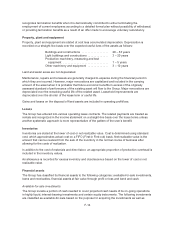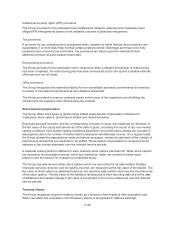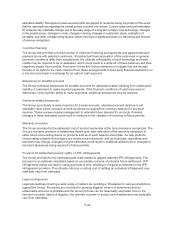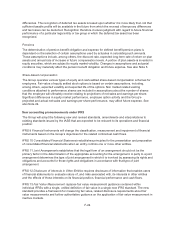Nokia 2012 Annual Report Download - page 216
Download and view the complete annual report
Please find page 216 of the 2012 Nokia annual report below. You can navigate through the pages in the report by either clicking on the pages listed below, or by using the keyword search tool below to find specific information within the annual report.ongoing intentions: (1) Highly liquid fixed income and money-market investments that are readily
convertible to known amounts of cash with maturities at acquisition of 3 months or less, which are
classified in the balance sheet as current available-for-sale investments, cash equivalents. Due to the
high credit quality and short-term nature of these investments, there is an insignificant risk of changes
in value. (2) Similar types of investments as in category (1), but with maturities at acquisition of longer
than 3 months, are classified in the balance sheet as current available-for-sale investments, liquid
assets. (3) Investments in technology related publicly quoted equity shares, or unlisted private equity
shares and unlisted funds, are classified in the balance sheet as non-current available-for-sale
investments.
Current fixed income and money-market investments are fair valued by using quoted market rates,
discounted cash flow analyses and other appropriate valuation models at the balance sheet date.
Investments in publicly quoted equity shares are measured at fair value using exchange quoted bid
prices. Other available-for-sale investments carried at fair value include holdings in unlisted shares.
Fair value is estimated by using various factors, including, but not limited to: (1) the current market
value of similar instruments, (2) prices established from a recent arm’s length financing transaction of
the target companies, (3) analysis of market prospects and operating performance of the target
companies taking into consideration the public market of comparable companies in similar industry
sectors. The remaining available-for-sale investments, which are technology related investments in
private equity shares and unlisted funds for which the fair value cannot be measured reliably due to
non-existence of public markets or reliable valuation methods against which to value these assets, are
carried at cost less impairment.
All purchases and sales of investments are recorded on the trade date, which is the date that the
Group commits to purchase or sell the asset.
The changes in fair value of available-for-sale investments are recognized in fair value and other
reserves as part of shareholders’ equity, with the exception of interest calculated using the effective
interest method as well as foreign exchange gains and losses on monetary assets, which are
recognized directly in profit and loss. Dividends on available-for-sale equity instruments are recognized
in profit and loss when the Group’s right to receive payment is established. When the investment is
disposed of, the related accumulated changes in fair value are released from shareholders’ equity and
recognized in profit and loss. The weighted average method is used when determining the cost basis
of publicly listed equities being disposed of by the Group. FIFO (First-in First-out) method is used to
determine the cost basis of fixed income securities being disposed of by the Group.
An impairment is recorded when the carrying amount of an available-for-sale investment is greater
than the estimated fair value and there is objective evidence that the asset is impaired including, but
not limited to, counterparty default and other factors causing a reduction in value that can be
considered other than temporary. The cumulative net loss relating to that investment is removed from
equity and recognized in profit and loss. If, in a subsequent period, the fair value of the investment in a
non-equity instrument increases and the increase can be objectively related to an event occurring after
the loss was recognized, the loss is reversed, with the amount of the reversal included in profit and
loss.
Investments at fair value through profit and loss, liquid assets
Certain highly liquid financial assets are designated as Investments at fair value through profit and
loss, liquid assets, at inception. For these investments the following criteria must be met: (1) the
designation eliminates or significantly reduces the inconsistent treatment that would otherwise arise
from measuring the assets or recognizing gains or losses on a different basis; or (2) the assets are part
of a group of financial assets, which are managed and their performance evaluated on a fair value
basis, in accordance with a documented risk management or investment strategy.
F-15


